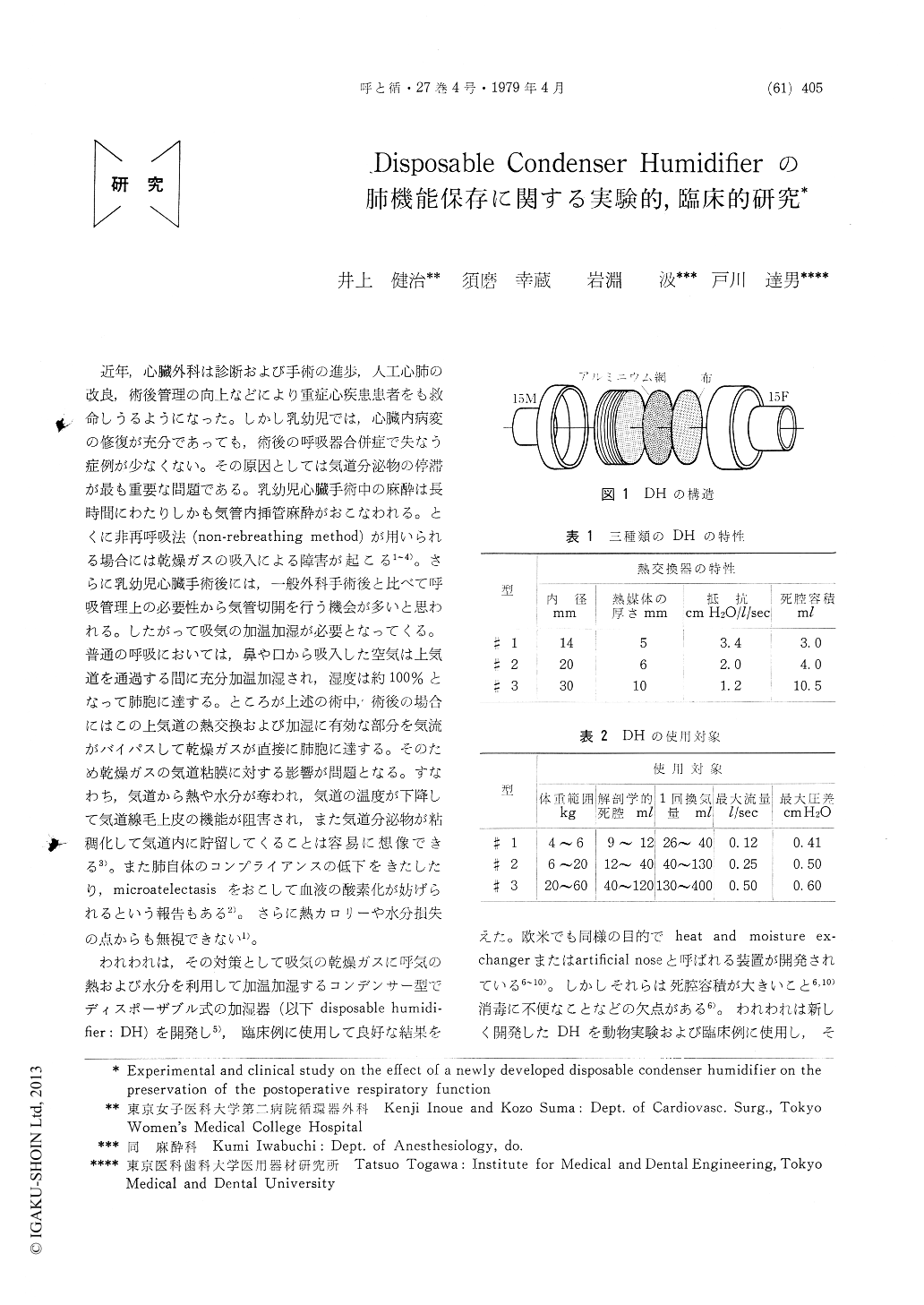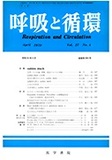Japanese
English
- 有料閲覧
- Abstract 文献概要
- 1ページ目 Look Inside
近年,心臓外科は診断および手術の進歩,人工心肺の改良,術後管理の向上などにより重症心疾患患者をも救命しうるようになった。しかし乳幼児では,心臓内病変の修復が充分であっても,術後の呼吸器合併症で失なう症例が少なくない。その原因としては気道分泌物の停滞が最も重要な問題である。乳幼児心臓手術中の麻酔は長時間にわたりしかも気管内挿管麻酔がおこなわれる。とくに非再呼吸法(non-rebreathing method)が用いられる場合には乾燥ガスの吸入による障害が起こる1〜4)。さらに乳幼児心臓手術後には,一般外科手術後と比べて呼吸管理上の必要性から気管切開を行う機会が多いと思われる。したがって吸気の加温加湿が必要となってくる。普通の呼吸においては,鼻や口から吸入した空気は上気道を通過する間に充分加温加湿され,湿度は約100%となって肺胞に達する。ところが上述の術中,術後の場合にはこの上気道の熱交換および加湿に有効な部分を気流がバイパスして乾燥ガスが直接に肺胞に達する。
A disposable condenser humidifier (DH) was developed for the purpose of keeping heat and moisture of inhalated gas, thereby preventing postoperative respiratory complications due to inhalation of dried anesthetic gas. The experi-mental and clinical study showed that the preser-vation of respiratory function was attained by using DH in terms of physiological shunt in the lung and alveolar-arterial PO2 difference. In addition, the patients treated with DH could cough up serous sputum easily immediately after operation. Electromicroscopic study in the dog experiments indicated better preservation of the mucociliary epithelium of the bronchus in the group with DH. It was concluded that DH was effective for preserving respiratory function during and after operation.

Copyright © 1979, Igaku-Shoin Ltd. All rights reserved.


